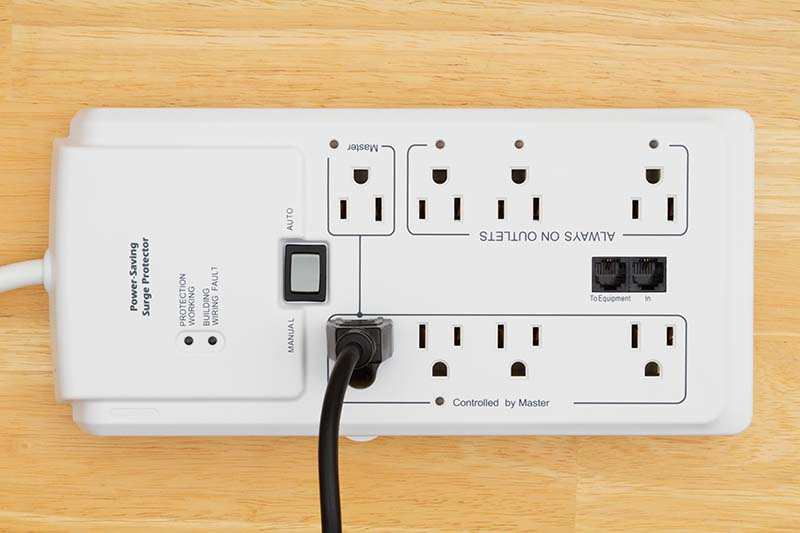When you plug any appliance into an electrical outlet, it is susceptible to damage from a power surge. A power surge is when electricity spikes and it can damage your electronics if they’re not protected. There are several options for surge protection, but choosing one based on price alone is not a safe decision. Not only are surge protectors important to save your appliances; they can help to extend the lifespan of your electronics. Things like lightning strikes, poor wiring, and other electronic incidents can cause a power surge, and it is much cheaper to invest in protection than to worry about replacing one – or many – appliances if your home or business has a power surge.
What is a Surge Protector?
Although a power surge might sound like a major incident, they happen all the time, often without anyone even noticing. But just one power surge can cost thousands if you leave your electronics unprotected. A surge protector is designed to protect your appliances and devices against the voltage spikes of a power surge. They can handle spike surges by providing an even flow of electricity to your devices. Often, surge protectors come in the form of a power strip. But don’t be misled; not all power strips provide surge protection. Many only provide additional outlets.
What to Look for in a Surge Protector
Only power strips that specifically say they have surge protection will protect your devices and electronics. Also, the joules ratings tell you what type of appliances a surge protector can actually protect. Don’t just assume that they are all the same; they’re not, so find one that can do the job. The joule rating on the packaging helps you to know what energy it can absorb to save your appliances.
What Does a Surge Protector Do?
Electrical outlets have no way to monitor or guarantee that there is a consistent and even flow of energy. A surge protector’s job is to protect any device plugged into an electrical outlet from voltage irregularities. It works by rerouting electricity so that the excess is not passed through to a device. In most residential and commercial structures, the standard electrical grid’s volt limit is 120 volts. If the energy voltage exceeds that 120-volt limit, a surge protector prevents your appliance from being “burned” by the surge of electrical energy.
Types of Surge Protectors
- Wall-Mount Surge Protectors
- Uninterruptible Power Supplies
- Point-of-Entry Surge Protectors
- Surge Protector Strips
Are They Really Necessary?
If you have appliances that are connected to an electrical outlet, then you need a surge protector to protect them. There is usually no warning before a surge; they can happen at any time. The more expensive a tool or appliance is, the more important it becomes to provide surge protection. Just one surge can wipe out everything from power tools to your televisions and computers.
In Conclusion
If you have outlets that power your appliances and devices, then you need surge protectors to protect them. You never know when a power surge is going to happen, so it is important to make sure that you are protected. And surge protectors can help to extend the lifespan of your electronics, so they serve a dual purpose. If you would like help to make sure that your home is surge-safe, contact Morrison today and let us protect your most expensive assets!

